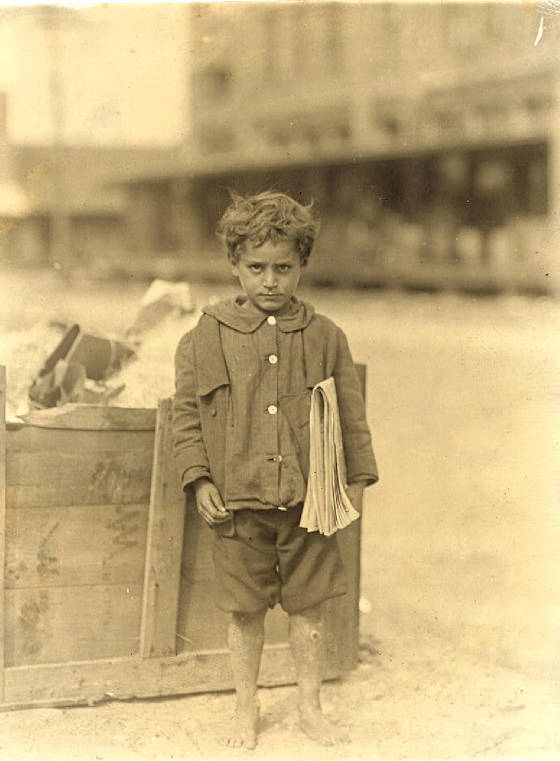
Lewis Hine caption: One of America’s youngest newsboys. 4 years old and regular seller. Tampa, Florida, March 1913.
“The first time I saw the picture, it was in the magazine for the 13th Annual Italian-American Invitational Golf Tournament. That was in 1990. The picture was attributed to Tony Pizzo. Later on, we were at some sort of function, and Tony told me, ‘That picture of your father is very important because it helped get the child labor laws passed.'” -Joe Valenti, son of Tony Valenti
“You look at that picture, and the pants don’t go with the shirt. You wore whatever shirt you got. You did what you had to do to survive. Everything was hand-me-downs. My children have seen the picture, and it’s hard for them to believe that people back then were that poor.” -Tom Valenti, son of Tony Valenti
The following is excerpted from The American City & County, Volume 12, published in 1915:
CIVIC cleanliness does not consist solely in clearing streets of refuse; it consists, too, in clearing streets of people who will either harm the streets or be harmed by them. Detroit is a good example of a city that is putting this theory into practice. She has now under consideration an ordinance forbidding street trading by boys under 12 and girls under 16, requiring boys between 12 and 16 to secure badges signifying their fitness to work, and prohibiting street trading after eight at night or before five in the morning by boys under 16, an ordinance which is the result of a long series of events that have taught Detroit that civic welfare demands the regulation of work on the streets by children.
As long ago as 1877, Detroit made an attempt to control the moral hazards of street trading by requiring all newsboys to secure badges from the license collector with the approval of the mayor, who was empowered to revoke a badge for the use of profane language or the committing of “any act of a disorderly or dishonest nature.” As the city grew, this ordinance became less and less effective until, with the usual number of badges issued in a year between 2,000 and 2,800, it was obviously impossible for the mayor to supervise the morals of the boys in any way. It was impossible, too, to be sure that every newsboy had a badge. Once or twice a year the police were ordered to round up the boys without badges and send them to the Juvenile Detention Home to get their permits. Otherwise there was no systematic attempt to give out the badges, and an investigator stated not long ago that in a group of 75 newsboys he found only one with a badge.
Little by little the newsboys began to fall into disrepute. Judge Hulbert, of the Juvenile Court, stated this year that 50 per cent of the boys brought to court were newsboys. The Police Commissioner thought it wise to rule that no boy under 10 might receive a badge, but this regulation could not be enforced under the existing system of granting badges.
Finally conditions among newsboys became so bad that the boys themselves went on a strike, appealed to the Detroit Federation of Labor for help and formed a union. Their first grievance was that they could not return unsold papers; but when this was adjusted by an agreement with the newspapers, they turned their attention to other conditions of street trading. It was known that many of the smaller boys made street work a means of begging, picking pockets and getting money by any means they could, and that many of them stayed out so late at night that they fell asleep in school or were dull in their lessons in consequence. So, by way of bettering conditions, the Newsboys’ Union resolved that boys under 16 should be kept off the streets after 9 PM. They asked the police and the newspapers to help enforce this ruling, but received no encouragement whatever and finally organized a “free-lance squad” to enforce it themselves. The National Child Labor Committee, who was investigating street trading in Detroit, began to work with the Newsboys’ Union for a new ordinance. The ordinance, now before the City Council, was endorsed by the Newsboys’ Union, has the support of many citizens, the Y. M. C. A., the Federation of Labor and the Juvenile Court, and should do a great deal to better conditions.
The agent of the National Child Labor Committee has reported that “so great is the problem that it is difficult to know how to go about measuring it.” He has found begging, gambling, panhandling, delinquency and lack of education enough among the street traders of Detroit to disprove once for all the idea that the boy who sells papers today is on the straight road to the White House, and he states that the conditions he has found “ought to stir every person with a determination to wipe out the whole business of child exploitation in street occupations.”
But Detroit is no worse than most other cities, and her problems no more serious than theirs. The National Child Labor Committee finds juvenile court officials, social workers and school authorities everywhere ready to testify that street trading, unregulated as it is in most cities, is a positive menace to civic improvement. It is not enough to form Newsboys’ Clubs and Homes in the hope of lessening the moral contamination of the boys. The evil cannot be mitigated; it must be stopped. If the streets are breeding delinquency and ignorance in our children, why not keep the children from too early and too intimate acquaintance with them? Why not clear the streets of small children? That is the question the National Child Labor Committee is asking the cities.
******************************
Lewis Hine traveled to Tampa three times, first in 1909, to document child labor in the cigar factories, the city’s biggest industry. He was back there briefly in 1911 to photograph messenger boys, after a long trip though the Gulf States, where he investigated working conditions for young children in the seafood industry. On his final visit, in 1913, he took seven pictures of newsboys.
This is one of Hine’s most popular photographs, rivaling that of the boy he called “Little Fattie,” a newsboy in St. Louis (see story of George Okertich on this site). At first glance, I wondered how a boy this age could be expected to make change and count his money, much less know to how to interact effectively with adults and deal with the volatile environment of urban streets. I also noticed what appeared to be a large sore on his leg, and the fact that he was barefoot. Ultimately, all I could think about was the fact that Hine didn’t give him a name, and how was I going find out who he was. I wound up using a tactic I had tried before. It was successful, and l was astonished to learn that the little newsboy eventually became the president of a huge produce company.
I began by emailing the news department at the Tampa Tribune on September 17, 2007. I explained my research project, and then wrote: “There is a photo of a 4-year-old newsboy in Tampa taken in 1913. Hine did not identify this child, and I want to find out who he was. I think that if you publish the photo in the Tribune, along with an article about my project, a descendant in the area might recognize him.”
On October 2, I received an email from Gary Mormino, a history professor at the University of South Florida, who writes a Tampa history column for the Tribune. He offered to include my inquiry in an article he was writing about Lewis Hine’s Tampa photos. Three weeks later, his article appeared, titled, “Photos Expose Child Labor In Tampa.” In part, it said:
“Interestingly, another Hine photo, taken the same month in Tampa, shows three boys about 8 to 10 years old described as brothers in Hine’s caption. He says the boys are part of the ‘Bellenti family,’ and there are actually four brothers, the youngest of whom is 4-year-old Tony (not in photo). They live on Garcia Avenue. A search of the Tampa city directory for 1913 finds no Bellentis on Garcia, but it does show an Anna and Antonio Valenti, bakers who lived at 1223 Garcia Ave. Given the language barrier, Valenti could have become Bellenti to Hine’s ears. Could the unidentified child be Tony Valenti?”
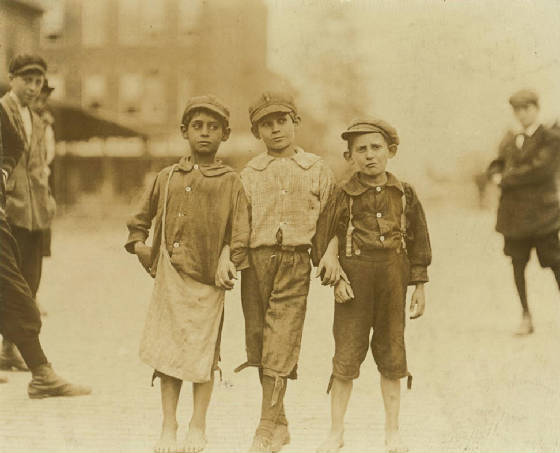
Lewis Hine caption: Bellenti Family. Crosoria, 10 years, Joe 9, Sam, 7, Tony, 4. Live on Garcia Avenue. All commence selling 6 A.M. and sell until late at night. Two oldest make 50 cents each, and two youngest make 25 cents each day. Sam been selling 2 years. Know little English. Illiterate. Do not go to school. Tony youngest newsy in Florida. Bury [i.e., buy] candy and go to movies. Location: Tampa, Florida, March 1913.
For the next several weeks, Mormino, and library archivist Paul Camp traded many emails with me, and we finally came to the conclusion that the unidentified boy was named Tony Valenti. But there was a problem. We discovered that there happened to be two boys named Tony Valenti living in Tampa at the time, one about four years old in 1913, and one about six years old. Which one was he?
Since Hine said that the boy was four, it was easy for me to assume that he had to be the brother of the “Bellenti” boys who lived on Garcia Avenue, and therefore, he had to be the boy in the picture. Census information indicated that the other Tony Valenti lived on 14th Avenue. But then some exciting information turned up in three more emails from Mormino and Camp.
“I just talked to Joe Caltagirone, a Tampa architect/draftsman who was a longtime friend of Tony Valenti (the six-year-old Tony). Joe is a WWII vet and is 80-plus years old. He says that about fifty years ago, at an Italian Club picnic, they discussed their youth. Tony mentioned that he had begun his working career as a newsboy, and that he had even been photographed at a street corner selling newspapers.”
“I’ve found Tony Pizzo’s copy of the picture of the little Italian newsboy (the late Tony Pizzo was a well known Tampa historian). On the back, Tony wrote ‘Tony Valenti, newsboy, became a tycoon in the produce business.’ I did a little checking on Tony Valenti’s produce business. The 1934 Tampa city directory is the first one that shows a Valenti produce business. It lists Anthony (Tony) J. (wife Mary) as living at 2802 14th street, and shows him as a partner with Bennie L. Lazzara in the wholesale fruits company of Lazzara & Valenti.
“I just got off the phone with Tom Valenti, one of Tony Valenti’s sons. He confirmed that the newsboy in the photograph is his father Tony. He said that Joe Caltagirone, an officer in the Italian Club, once showed Tony the photograph (which apparently had been circulating in the Italian Club for many years) and Tony replied, ‘That’s me.’ Of course, he related the tale of Tony Pizzo. Lewis Hine does list the age of the young boy as four, but I agree with others that he looks older. And the three “Bellenti” children are not Tony’s brothers.”
In December, another article was published in the Tribune. It included this comment from Tom Valenti, one of Tony sons: “Tony Pizzo told me that picture was my father. The picture is a very good likeness of one of my grandsons.”
Several months later, I interviewed Tom, and his brother Joe. Based on that interview, census information and other documents, I learned the following:
Tony J. Valenti was born on January 9, 1907, which would have made him six years old in the photo. His parents were Giuseppe (Joe) and Rosalia Valenti, Joe immigrated to the US about 1895, and married Rosalia about 1899, two years after she entered the US. He was a cigar maker first, then a peddler. In 1900, they and their first child, Vincente, were living at 1906 12th Avenue. By 1910, they were living on 14th Avenue, and had six children, including Tony. They would have five more by 1920, the last, Sexton, born just after his father Joe died, leaving Rosalia without a husband and the children without a father. At that time, three of the older children worked in a cigar factory.
Tony married Mary Scolaro about 1929. In the 1930 census, they are listed as living at 2709 Essex St. They have no children, and Tony is a produce salesman. He would go on to have a very successful career as a businessman. He and Mary had two sons and a daughter. Tony passed away in Tampa on April 10, 1975, at the age of 68. Mary passed away in 1988, at the age of 79.
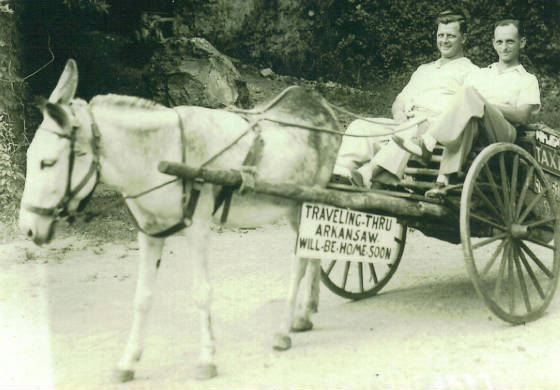
Edited interview with Joseph (Joe) and Thomas (Tom) Valenti, sons of Tony Valenti. Interview conducted by Joe Manning (JM) on February 21, 2008.
JM: What do you think of the famous picture of your father?
Joe: The first time I saw the picture, it was in the magazine for the 13th Annual Italian-American Invitational Golf Tournament. That was in 1990. I didn’t play golf, but somebody gave me the magazine. The picture was attributed to Tony Pizzo. When I saw it, I thought it was my brother, Tommy, at first. Me and Tommy are two years apart. I’m 74 and he’ll be 72 next month. I can remember what Tommy looked like when he was a little boy, and the boy looked just like him. But then I saw the caption, and it said, ‘The late Tony Valenti, a member of the celebrated produce family shown as a newsboy in 1913. Tony fitted the mold of Horatio Alger. The young businessman went on to become a prominent produce importer and dealer covering the national market.’ They got that information from Tony. We were at some sort of function, and Tony told me, ‘That picture of your father is very important because it helped get the child labor laws passed.’
JM: What did you think your father’s life was like at the time his picture was taken?
Joe: They didn’t have a lot of money. I remember the house we used to go to on weekends to visit my grandmother, my father’s mother. I think the house was only about 800 to 1,000 square feet. It was a long, slender house. It was on 14th Avenue. They had about a 40-foot lot, and it looked like a little bowling alley. The interstate is there now.
JM: What kind of work did your grandfather do?
Tom: He was in the produce business — a produce peddler. He had a cart, and he pushed it down the street and through neighborhoods. It had a big brass bell that he would ring. My oldest daughter has it now. Eventually, he made enough money so he could buy a donkey to pull the cart.
JM: Would the family have been struggling so much that your father had to work at a young age to help out?
Joe: I think everyone was struggling in those days. If you look at the neighborhood, there were a bunch of row houses, one after the other, and they all looked alike to me.
Tom: Daddy would have been six in 1913. How many of the children would have been born by then?
Joe: There would have been Jim and Annie. Daddy was the second boy, I think.
JM: When did your grandfather come over from Italy?
Tom: I don’t know. He was born March 3, 1872. He died in 1919.
JM: So Tony was only 13 when his father died. That left your grandmother to raise a bunch of kids by herself.
Joe: There were 10 kids, and the last one wasn’t born yet. My grandmother was a few weeks pregnant when my grandfather died.
JM: How did the family get by?
Joe: Everyone was contributing from the money they were making selling fruits and vegetables. My father got a job with Geraci’s when he was about 15. Nick Geraci was a produce distributor. The warehouse was near the corner of 23rd St and 7th Avenue. My dad was already a very good salesman, and old man Geraci recognized that, so he hired him. He worked in the warehouse for a while. There was a little filling station in front, and the warehouse was in back. They sold to stores and restaurants, but this was back in the days when they didn’t deliver, so everybody came to their platform. Tom and I used to work in that warehouse when we were kids.
JM: Did Tony work his way up in the company?
Joe: Yes.
JM: How far?
Tom: He got to be executive vice president and did that till he died.
JM: How old was he when he became vice president?
Tom: I would say when old man Geraci died, and his boys asked him to run the business. It was before Dad had the heart attack, which he had at age 40. He might have been in his late 20s.
Joe: My dad worked 18 or 19 hours a day. I can remember him coming home at night after we ate, and I can remember in the morning when I got up to go to school, he wasn’t there. His day off was Sunday, but he’d go in a few hours in the morning, because they kept the warehouse open for some of their customers. My dad also owned Lazzara & Valenti with Bennie Lazzara. After a big fire, Geraci’s moved to Hillsborough Avenue, across the railroad tracks from the Tampa Wholesale Farmers Market.
Tom: They had at least five acres there.
JM: That was a pretty competitive business. I would think there would have been a constant fight for customers and territory.
Joe: You had to have a good reputation and good quality to compete. Once you were in with a grocer or another wholesaler, and they knew your products and knew how to deal with you, they pretty much stuck by you.
JM: When did your father get married?
Joe: Probably about 1929. He married Mary Scolaro. Her parents had a grocery store on 7th Avenue and 21st Street. There’s a bank there now.
JM: When you were growing up, did you work for your father?
Tom: Yes.
Joe: I started working there when I was 15 years old.
Tom: We didn’t work after school, just in the summer.
Joe: Someone would pick us up early in the morning. I had to unload those rail cars. In those days, they had a plank that you would put from the platform to the inside of the rail car. When iceberg lettuce would come in, it was so wet and so sloppy. You’d put three crates on the hand truck, and you’d try to roll out of there without slipping and busting your butt. The gang plank wasn’t even with the platform, so you either had to go up or come down. It was treacherous.
Tom: When we worked our first summer there, Dad started us out in the warehouse bagging lemons, putting two dozen lemons in a plastic bag and tying them up. Eventually, we started using the hand truck and trucking five 50-pound bags of potatoes up a ramp into a trailer.
JM: Did your father ever become owner of Geraci’s?
Tom: No, he never was the owner. But they allowed him to start his own business with Benny Lazzara inside Geraci’s. They would buy produce from Geraci’s at a set price. They had their own trucks, and they would deliver to the outlying areas, such as St. Petersburg, Sarasota and Bradenton. By then, Geraci was delivering only to the Winn-Dixie warehouse. Everyone else still came to their platform. So my father had the idea that there were a lot of people not being served. He would pay Geraci’s a profit, and then he could add a nice profit and deliver it out of town.
The Geraci family and my father were very close friends. They would go to lunch together. Nick Geraci, the son, would come in about 9:00 in the morning and leave right after lunch. He lived in North Tampa. He was a hunter and a fisherman, and he liked to have plenty of time to do that stuff. Nick, the old man, and Nick, the son, trusted my father with everything. My daddy made it easy for them.
Joe: Eventually, we moved to Ybor City, which is a neighborhood in Tampa.
Tom: The first house my father bought cost $3,300. Then he bought a house on the corner of 25th Avenue and Kent Street.
Joe: It was one of those bungalows, with a nice wrap-around porch, maybe about 1,400 square feet. We grew up in that house. It’s still there. He sold the house and moved out to Seminole Heights (also in Tampa), which was closer to the warehouse. About that time, Lazzara & Valenti started selling to schools, colleges and restaurants.
JM: So I assume your father had lots of friends in the restaurant business.
Joe: That’s right.
JM: Because of that, he must have always been a welcome guest in those restaurants.
Joe: Yes, he was, but he always wanted to pay his own way. He would let them buy him a beer now and then.
JM: When he had the heart attack age 40, was it serious?
Joe: He didn’t go to work for a couple of months. I would have been 13 years old when that happened. I remember it vividly. After the heart attack, he changed his life style. He would work from 6:30 or 7:30 in the morning to 11:30 in the morning. Then he would come home and have lunch, take a little nap, and work out in the yard.
Tom: He would call the office to see what going on.
JM: When did he die?
Tom: In 1975, at the age of 68.
JM: When did you mother die?
Tom: In 1989, at the age of 79.
JM: Did she work in the business, too?
Tom: No, she never worked. But she sure could play bridge – poker and bridge. She was a great housewife and mother.
Joe: Absolutely.
JM: How many children did she and your father have?
Tom: There were three of us children, me and Joe and Linda.
JM: Did you guys go to college?
Joe: We both went to the University of Florida. I went three years, and then I got sick with a bad allergy and had to come home. I couldn’t work or anything. Then I went to Tampa University, but the allergy came back again, and I quit school and started to work full time. I worked for Geraci’s and Lazzara & Valenti, and then I purchased a produce business called United Produce, in St. Petersburg, when I was about 26 years old. I paid off the purchase in a couple of years. I was the president, my daddy was the vice president, and my brother was secretary/treasurer. When Benny Lazzara died, Tommy ran Valenti Produce for my dad. At that time, my dad was running Geraci’s, Tommy was running Valenti Produce, and I was running United Produce.
JM: Are you still doing that?
Joe: We’re both in the securities business. I’ve been doing it for 40 years now. When I was 33, I told my dad that I wanted to leave the business and go into the securities business. In those days, they called you a stockbroker. For a few years, it had been a hobby. I would buy stocks and bonds. I loved it. I started working for E.F. Hutton. I worked for them for 14 years, and then got hired away as the manager of Thompson and McKinnon. I worked 10 years for them, until they went under and Prudential Bache bought us out. I became their manager and stayed for six years, until Paine Webber hired me away. They also hired my son, and then Tommy joined us. By that time, we had sold the produce business.
Tom: We had consolidated after Joe became a stockbroker. I had to run Valenti and United, one in one city, and one in the other. I consolidated Valenti into United, and operated out of St. Petersburg.
JM: What did your sister Linda do when she grew up?
Tom: She was a very good local artist, mostly a painter. There was a time that she worked with us as a salesperson for United Produce. She had my father’s talent for sales. He could sell anything and everything, and so could Linda. She’s retired now and lives in Georgia.
Joe: My dad never told us that he sold newspapers. But he did anything he could do to make nickels and dimes. They all did that in those days.
Tom: In those days, when somebody had a pair of shoes, they would eventually be passed down to the next boy. There were six boys in his family. In the picture, he was barefoot. People don’t realize that when you live in Florida, you go barefoot a lot. We did when we were kids. We would wear shoes in school, but as soon as we got home, we took them off. You look at that picture, and the pants don’t go with the shirt. You wore whatever shirt you got. You did what you had to do to survive. Everything was hand-me-downs. My children have seen the picture, and it’s hard for them to believe that people back then were that poor.
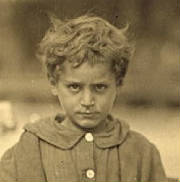
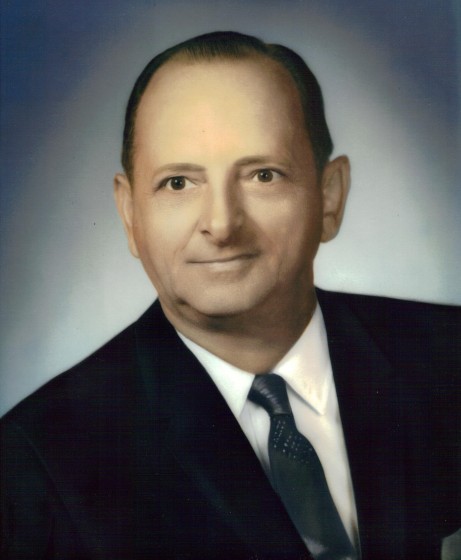

*Story published in 2010.